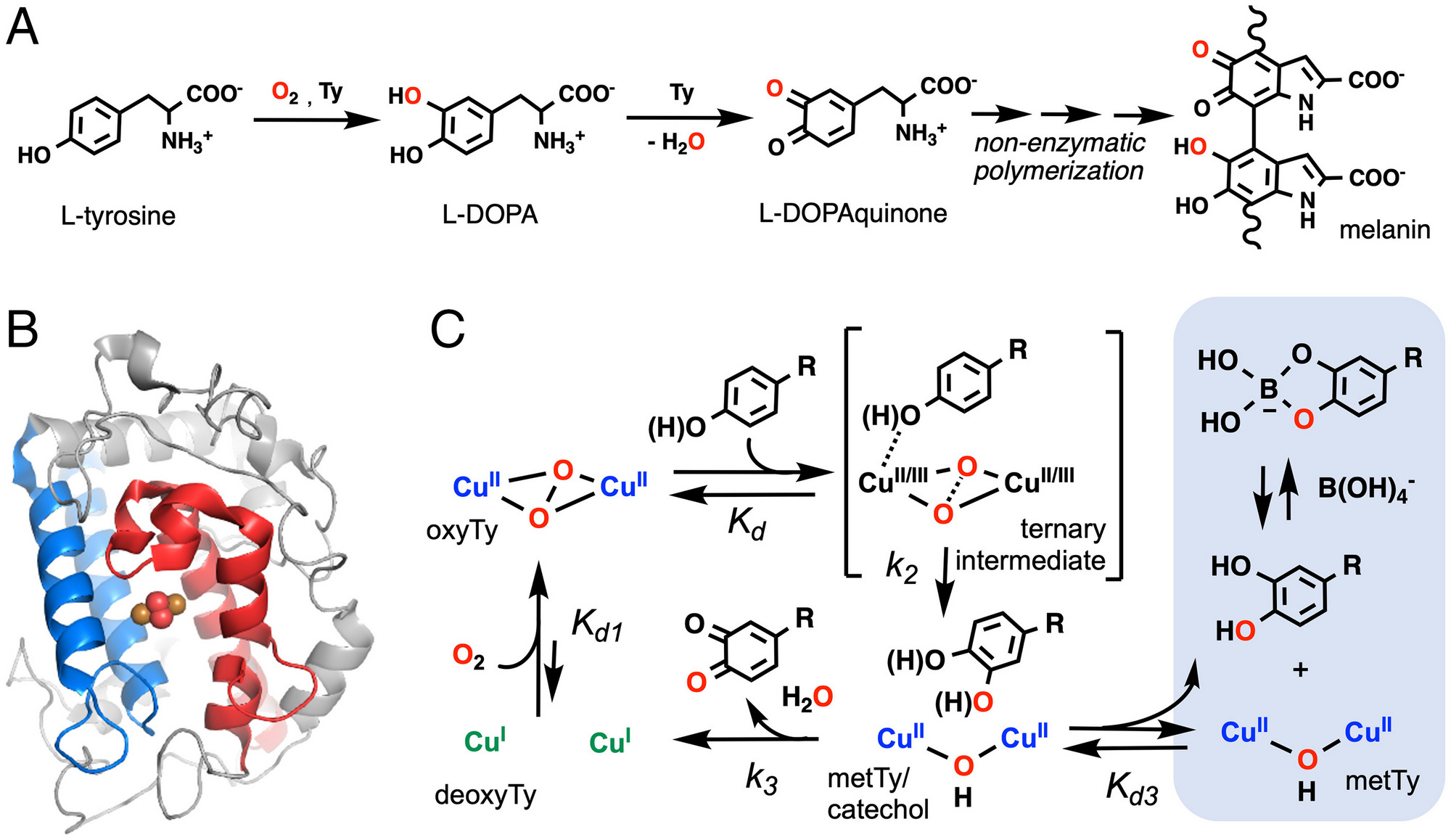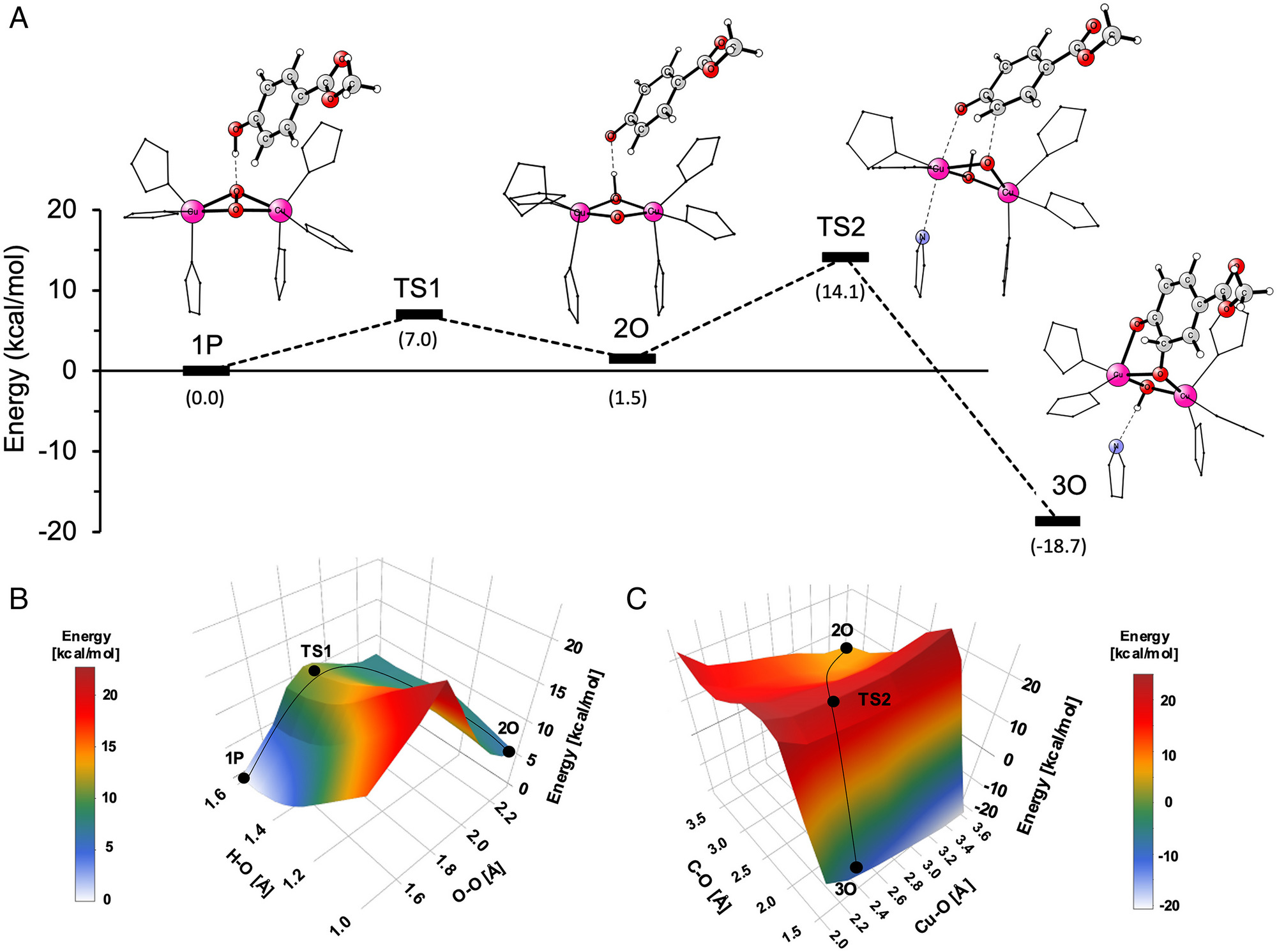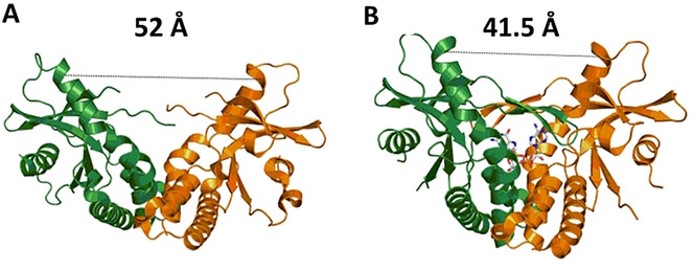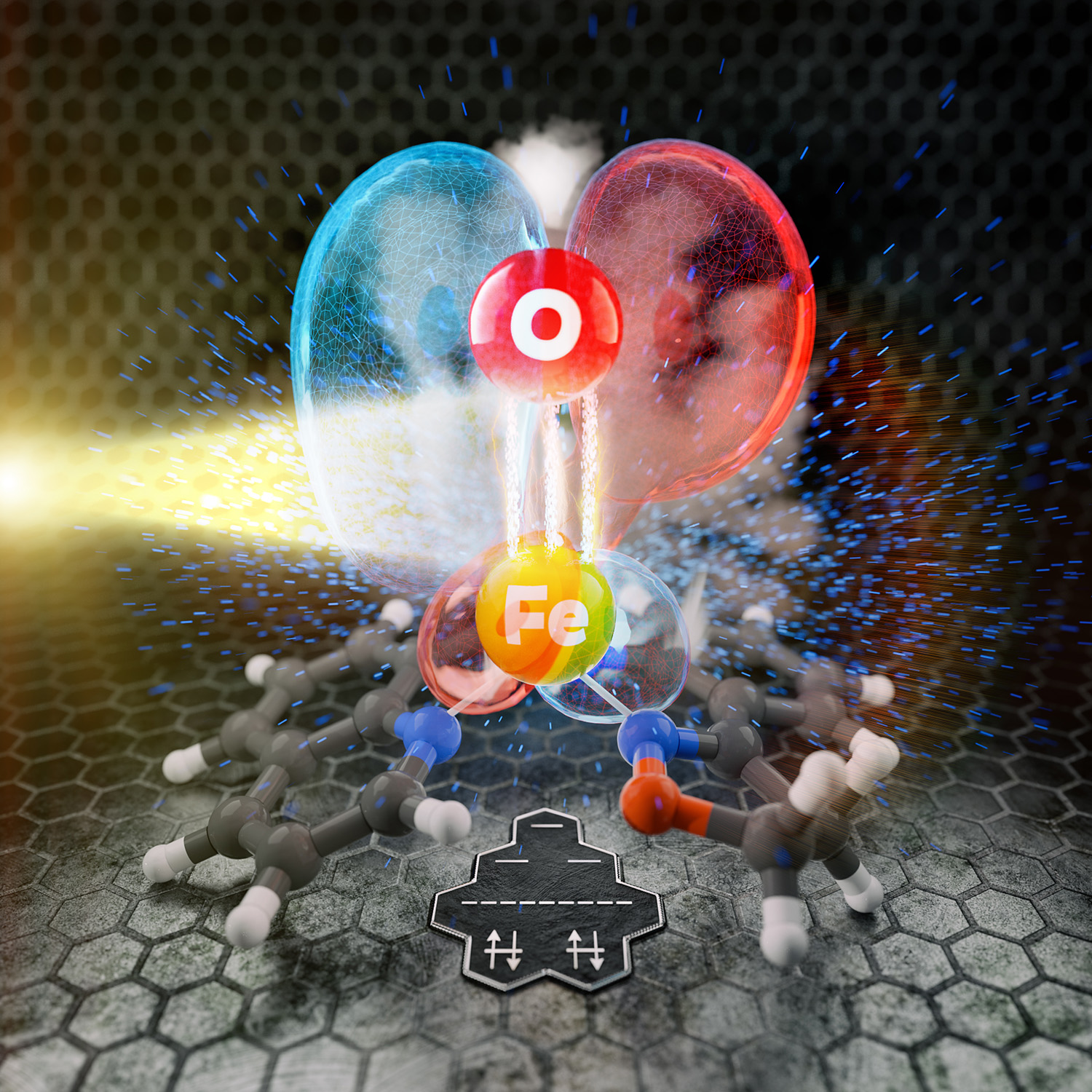A step toward understanding the oxygen activation by copper containing enzymes

Melanins are ubiquitous photoprotective biopolymer pigments with major implications ranging from fruit browning to severe human diseases, such as skin cancer. Tyrosinase (Ty), the enzyme catalyzing the rate-limiting step in melanin biosynthesis is thus an important biotechnological and therapeutic target.
Tyrosinase contains a coupled binuclear copper (CBC) active site that binds dioxygen to form an oxy-tyrosinase intermediate which then binds the substrate (tyrosine) and carries out its monooxygenation. Despite its crucial role, the mechanism of this reaction was until now very poorly understood and defined.
Using spectroscopic, kinetic, and computational methods, researchers led by Lubomír Rulíšek from IOCB Prague and Edward I. Solomon from Stanford University succeeded now in trapping and characterizing the elusive ternary (Ty + O2 + substrate) intermediate, which allowed them to fully clarify the mechanism of the subsequent reaction.

This study provides an unprecedented molecular-level insight into the critical rate-limiting step in melanin biosynthesis. The results will help to understand how nature controls oxygen activation and reactivity in enzymes containing CBC active sites. In the future, this can help in the development of new therapies for bacterial and fungal infections, as well as for early detection, prevention, and treatment of complex human diseases, including skin cancer and Parkinson’s disease.
Original article: Kipouros, I.; Stańczak, A.; Ginsbach, J. W.; Andrikopoulos, P. C.; Rulíšek, L.; Solomon, E. I. Elucidation of the tyrosinase/O2/monophenol ternary intermediate that dictates the monooxygenation mechanism in melanin biosynthesis. Proc. Natl. Acad. Sci. U.S.A. 2022, 33, e2205619119. https://doi.org/10.1073/pnas.2205619119





